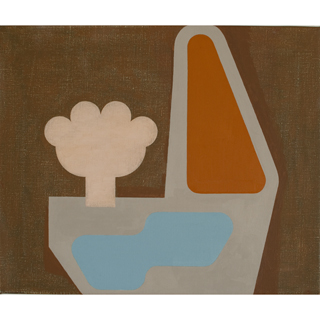Statement
 Baby navy |
 Land meets sea |
 Faraya |
Visual thoughts
I was very moved by the handwriting, in Arabic, on the back of a postcard in the Tate Modern’s Conflict Time Photography exhibition*. A series of images of the aftermath of bomb explosions in Lebanon during the conflicts in the 1980’s. These photos of bombed cars and street scenes of destruction and violence had small sections of text on the reverse. The script (that I could not read, as I do not understand that language) struck me as so incredibly beautifully written, my eyes welled up with tears. The delicacy of the blue ink marks on the white card was so visually eloquent and sensitive, and this beauty may even have been unknown to it's author. I was moved by the shocking juxtaposition of the nuance of the skilled human hand, and the incredible violence depicted on the reverse of the postcard.
Painting for me is a way of organising thoughts. It is a way to capture a timeless moment. Painting is a 4-dimensional form, with time being the most important dimension. My work is 'minimal' in that it deals with simplicity; I restrict myself to a limited range of elements, colours, and techniques, in order to clarify and amplify the power and energy that is possible to invest in forms.
I want my work to reveal itself over time, and to take some time to see and understand, as long as it has taken time to make or arrive at.
I’m not a spontaneous painter, but I value freshness and freedom; this might seem a contradiction. The task, for me, in painting is to capture spontaneity yet create a sense of certainty and of something having been arrived at.
Humans love to abstract into sequential language; languages requires grammar to be meaningful.
Any sentence requires subject, object and verb. I think this may also true of painting. A functional work of art requires a functional grammar. Like other forms of language it constantly changes, yet certain core aspects of this grammar remain unchanged.
In my case a set of related shapes (by scale, form, colour and composition) together form a kind of visual sentence creating a purely visual statement.
Here I write as a series of sentences connected into an argument for an idea, meanwhile my work presents a group of shapes in relation to each other, painted carefully on canvas. The shapes are flat, coloured, filled in.
What is shown, what are the subject, object and verb? They are proximity, relations, colour harmony or disharmony, negative shapes and spaces.
Objects contain energy. By combining forms together and carefully deciding how to place them in relation, it is possible to release an energy in the work. I try to do that.
Often beauty and meaning are missed or cruelly trampled in the violence of our blindness and ignorance, like the Arabic handwriting.
* Reference: http://www.tate.org.uk/whats-on/tate-modern/exhibition/conflict-time-photography
Duncan Smith
2015


